#first muslim woman ruler of india
Explore tagged Tumblr posts
Text
#one world one smile#razia sultana#first woman ruler of india#biography of razia sultana#sultana razia: empress of india#first muslim woman ruler of india#raziya sultana#razia sultan biography in hindi#real history of razia sultan#indian history#razia sultan history#first turk woman ruler of a muslim sultanate#razia sultan 1st female ruler of delhi sultanate#south asia's first female monarch#the rise of razia sultana#first and last emperor of delhi sultanate#smile
0 notes
Text
WHERE MY LORE STARTED
Thank you for the tag @almostfoxglove, this is a fun little thing @cuppajoel kickstarted.
How To Play: You make a lil moodboard of stuff that has inspired you, stayed with you (songs, shows, movies) and then you include them in the ppcu fandom by creating something (a moodboard, a drabble, a fic). Check out @cuppajoel's Marcus Acacius fic inspired by Monica and Richard from Friends.
You don't have to commit to anything big, it could just be a post about the stuff you love!!
Here's a few movies that stayed with me growing up:

All these movies are Hindi movies. The first English movie I ever watched was the last Harry Potter movie and safe to say i was UNIMPRESSED. Like what do you mean they just waved their sticks at each other and that was the climax??? get outta here.
These movies are the last golden era of Bollywood imo. Because we were on a real high here— love was the currency, it was something to aspire to. Movies explored love in all its forms, love was equated to devotion and worship. It was presented as a form of godliness in humans.
Then I grew up and got smacked in the fucking face just like the heroines in the movies by rising Hindu nationalism, sexism and misogyny. Where men being in love meant they could hit women because it was just a show of passion and possessiveness. And now movies are nothing more that revisionist action history flicks that seek to erase all presence of an entire minority group and overall being a Hindu nationalist mouthpiece and propaganda. Women in movies today don't have the AGENCY they used to unless it's specifically a female led film— but even then the plot is always somehow driven by a man 🥱🥱🥱.
Anywho. My love and appreciation for these 12 movies screamed under the cut:
Jodha Akbar
We're starting off SO strong. This movie informed my views on masculinity. Akbar was soft, warm, kind and it made him a better ruler AND lover. It was not a trait he was shamed for. As somebody who grew up in an abusive household, this movie was monumental when I realised that men apologised, they groveled when they were wrong. Most importantly, they cared about the women in their lives and valued them. I write the dialogues from this movie and it's songs into my fics.
3 Idiots
I carry a part of this movie with me, always. It's a comedy. But my god does it punch me in the feels. It's impacted how I see my education, success and career. It's also informed my opinion of how men should be— funny, kind, ingenious, uplifting.
Om Shanti Om
By all means, a comedy. A real insider comedy poking fun at everything Bollywood. And also chock full of love— familial love, platonic love, romantic love, self love. Men being soft, yearning, humble and devout lovers.
Chakde India
I cannot BEGIN to explain the impact this movie had on me. It was my introduction to female rage. Something in my brain clicked into place watching this. Like Oh. I loved this movie for having a woman be completely inappropriate, bitchy, ambitious, manipulative and still be one of the good guys— an integral part of a TEAM. This is also a movie I will show my children for a lesson in Islamophobia and patriotism. Both my parents lived through violent communal riots (in Mumbai and in Gujarat) and they always insisted I never discuss being Muslim in public. No religious talk. Ever. Avoid anybody who even talks about religion, in fact. And I never understood until this movie. It never occured to me that people would consider you a traitor to your own country based solely on your faith. Also Sharukh Khan looked INSANELY hot in this movie— this is where my daddy issues and taste for hot, older men started.
Veer Zaara
THERE IS A PATERN. THERE IS A PATTERN. And it's men being lovers. Like WHAT DO YOU MEAN HE HELD A VOW OF SILENCE FOR OVER TWO DECADES DESPITE BEING INNOCENT ONLY TO PROTECT A WOMAN'S DIGNITY? A woman he hadn't even kissed let alone touched. Nobody is doing it like this anymore for real. If there's one thing about me, I will always write the men in my fics to love on this level.
Munna Bhai (all the movies)
This was a comedy. And as all comedies are it was thought provoking. It took a character you could easily poke fun at— some low level goons— and wielded them as weapons against larger issues like corruption and societal expectations. Again, themes of men being silly in love. Men undertaking massive efforts to be with their beloved and to prove themselves worthy and capable of being a better person.
Jab We Met
Love as a major theme. I know Geet was a manic pixie dream girl type of character but it was my first time seeing a woman NOT be shamed for being chatty, gossipy, flighty, intrusive. Well, except for Aditya at first but only because they were enemies to lovers. They were THE bickering, bantering couple. And Aditya?? add this man to the list of lover boys. To escort the woman you love all the way to the man she loves all because you wanna see her happy. And then your heart breaking when she's NOT happy??? And that scene where Aditya admits that Geet saved his life just by being who she is and talking to him. His love for her saved him?!?!?!?! SIGN ME TF UP.
Chillar Party
Now you might ask why there's a bunch of kids in their underwear. But that's the plot. The kids protest on the streets wearing only underwear to protect their neighborhood street dog. It's such an innocent and funny story. And yet if you watch it as an adult, you realise these kids fought a corrupt politician, social apathy and widespread targetted misinformation. A movie I loved for it's community.
Kabhi Khushi Kabhi Gham
I put off watching this movie FOREVER. Because I didn't want to be a basic bitch. But I am, I am a basic bitch. A celebration of love and family. Also another bickering, bantering couple. Poo was iconic, I aspire to be her. And Anjali was iconic too, I wanna be her as well.
Tumhari Sullu
VIDYA BALAN the woman of my dreams, the queen of my heart. Any movie about a middle-aged/older woman breaking away from her cookie-cutter life and societal expectations to snatch her own opportunity?? Inject that shit straight into my veins. Sullu was so cute, adorable and endearing. Her husband loved her and supported her. There was a moment where his frustrations and job got in the way of that but he was always batting on her side.
Lagaan
This was an epic alright. And about community first and foremost. I quote this movie as a meme all the time. But I loved every character in this movie. And the love in this one was good too. They almost tricked us there by pairing the hero with the white girl. But it was the "it's always been you" trope.
English Vinglish
As I've said before, any movie about a middle-aged/older woman breaking away from her cookie-cutter life and societal expectations to snatch her own opportunity?? Inject that shit straight into my veins. I wanna be in my 30s, 40s, 50s, 60s and I wanna be Shashi and Sullu.
I won't even go into the honourable mentions but A Wednesday? Rang de Basanti? Taare Zameen Par? 😵💫😵💫😵💫 so many more
A full pressure tag to a few other desi babes ik on here bc i don't wanna be brown alone: @papurgaatika @damneddamsy @bluemusickid @clubsoft
Also my lovelies: @probablyreadinsmut @evolnoomym @salingers @iknowisoundcrazy @joeloverture @romanarose @myownwholewildworld @ohhoneypascal @mushgloomz @kedsandtubesocks @baronessvonglitter @guiltyasdave @ozarkthedog @maiamore
35 notes
·
View notes
Note
favorite history figures?
1. Aisha bint Abu Bakr (r.a):
Prophet Muhammad (s.a.w) wife and one of the most esteemed Islamic scholars.
2. Razia Sultana:
The first female Muslim ruler of the Indian subcontinent and the only female Muslim ruler of Delhi.
3. Fatima Al-Fihri:
A Muslim scholar from Morocco who opened the world's first university.
4. Nana Asma'u:
Nigerian princess, poet, teacher and an advocate for education and empowering Muslim women.
5. Sayyida al-Hurra:
A pirate queen who ruled the Mediterranean for over 30 years.
6. Hürrem Sultan:
The first and one of the most influential Haseki Sultan of the Ottoman Empire. She was the first slave woman to be freed and married to the emperor.
7. Fatimah Jinnah:
The first female dentist from Indian subcontinent and one of the greatest architects in establishing the country of Pakistan as a home for South Asian Muslims.
8. Noor Inayat Khan:
A Muslim woman from British India who was the first female wireless operator sent from Britain into occupied France. She was awarded multiple honours for her bravery.
8. Rabia al-Adawiyya:
One of the most important Sufis in Muslim tradition and one of the founders of the Sufi school of "Divine Love".
9. Shajar al-Durr:
An Egyptian queen who marked the start of Mamluk Sultanate. She was the one to defeat the Crusades and prevent them from advancing further.
10. Nusaybah bint Ka'ab (r.a):
One the earliest converts to Islam and a female warrior who defend Prophet (s.a.w) during the Battle of Uhud.
As you can tell I absolutely adoreee Muslim and South Asian baddies.
#desi#desi tumblr#desiblr#pakistani muslimah#muslim women#hijab#hijabi#progressive muslims#progressive islam#islam#powerful women#historical figures
6 notes
·
View notes
Note
In which world has India "occupied" Kashmir? Kashmir is a part of India which is severely affected by terrorist activity. Many were forced to leave their homes to settle in different parts of India (Kashmir pandits etc). How was that India's fault and not the fault of the country the terrorists came from?
Firstly, I want to make it clear that I do condemn what was done to Kashmiri Pandits. Secondly, I do believe that Kashmir is occupied (that does NOT mean that I don't understand that the geopolitical reality is complex), and that a plebiscite should have been conducted. And I believe that neither India nor Pakistan has been entirely innocent with regard to Kashmir.
My interpretation of the events described below (quoted from the linked articles), is that Kashmir is occupied. And no, they are not my only sources of information - other articles, the Kashmiri woman who came to speak at my university, and a friend of a friend who visited Kashmir and stayed there for a significant period of time (not as a tourist), are also sources of my information on Kashmir.
When India and Pakistan gained independence from British rule in 1947, the various princely rulers were able to choose which state to join. The Maharaja of Kashmir, Hari Singh, was the Hindu head of a majority Muslim state sandwiched between the two countries and could not decide. He signed an interim "standstill" agreement to maintain transport and other services with Pakistan. In October 1947 tribesmen from Pakistan invaded Kashmir, spurred by reports of attacks on Muslims and frustrated by Hari Singh's delaying tactics. The Maharaja asked for Indian military assistance. India's governor-general, Lord Mountbatten, believed peace would best be served by Kashmir's joining India on a temporary basis, pending a vote on its ultimate status. Hari Singh signed the Instrument of Accession that month, ceding control over foreign and defence policy to India. Indian troops took two-thirds of the territory, and Pakistan seized the northern remainder. China occupied eastern parts of the state in the 1950s. Whether the Instrument of Accession or the entry of Indian troops came first remains a major source of dispute between India and Pakistan. India insists that Hari Singh signed first, thereby legitimising the presence of their troops. Pakistan is adamant that the Maharaja could not have signed before the troops arrived, and that he and India had therefore ignored the "standstill" agreement with Pakistan. Pakistan demands a referendum to decide the status of Kashmir, while Delhi argues that, by voting in successive Indian state and national elections, Kashmiris have confirmed their accession to India. Pakistan cites numerous UN resolutions in favour of a UN-run referendum, while India says the Simla Agreement of 1972 binds the two countries to solve the problem on a state-to-state basis. There has been no significant movement from these positions in decades. In addition, some Kashmiris seek a third option - independence - which neither India nor Pakistan is prepared to contemplate.
The two countries fought wars over Kashmir in 1947-48 and 1965. They formalised the original ceasefire line as the Line of Control in the Simla Agreement, but this did not prevent further clashes in 1999 on the Siachen Glacier, which is beyond the Line of Control. India and Pakistan came close to war again in 2002. The situation was further complicated by an Islamist-led insurgency that broke out in 1989. India gave the army additional authority to end the insurgency under the controversial Armed Forces Special Powers Act (AFSPA). Despite occasional reviews of the AFSPA, it still remains in force in Indian-administered Jammu and Kashmir.
Today it remains one of the most militarised zones in the world. China administers parts of the territory.
Media in Indian-administered Kashmir are generally split between pro- and anti-secessionist. Local journalists work under strict curfews and also face threats from militant groups. Internet access is sporadic and text messaging services are regularly blocked.
In Pakistani-controlled Kashmir, the media are used mainly for propaganda purposes, mainly to highlight the alleged human rights violations in Indian-administered Kashmir.
Also, I think the following information is relevant too.
The Muslim majority in the princely state found the Maharaja’s reign authoritarian. In the words of Kashmiri author P.N. Bazaz, “Dogra rule has been a Hindu Raj.” Maharaja Hari Singh thought of independence because, according to American Indologist William Norman Brown, “He disliked becoming part of India, which was being democratised, or Pakistan, which was Muslim....”
On August 12, 1947, J&K petitioned India and Pakistan for a standstill agreement, which Pakistan signed but India refused, asking the Maharaja to send a representative for discussions. With every passing day, the Maharaja’s position became more precarious. As early as June 1947, about 60,000 ex-army men (mostly from Poonch) had started a no-tax campaign against the Maharaja. On August 14-15, Muslims in Poonch hoisted Pakistani flags, provoking the imposition of martial law and further angering Muslim subjects. Pakistan was sending warning notes to the Maharaja, one on August 24 reading: “Should Kashmir fail to join Pakistan, the gravest possible trouble will inevitably ensue.” The worst fears of the Dogra ruler came true when on October 22, Pakistan launched Operation Gulmarg by mobilising tribals from the North-West Frontier Province. About 2,000 tribesmen, armed with modern weaponry, raided Muzaffarabad. By the evening of October 23 they had captured Domel. Garhi and Chinari fell over the next two days. Then their main column proceeded towards Uri, and then, along the Jhelum river towards Baramulla, the entry point to Srinagar.
On October 24, Maharaja Hari Singh appealed to India for military aid to flush out the raiders. India obliged but not before the Instrument of Accession was signed on October 26. It limited India’s powers over the Valley to matters of defence, communications, and foreign affairs.
And this is from the Instrument of Accession:
Nothing in this Instrument shall be deemed to commit in any way to acceptance of any future constitution of India or to fetter my discretion to enter into agreement with the Government of India under any such future constitution.
4 notes
·
View notes
Text
Events 8.1 (before 1920)
30 BC – Octavian (later known as Augustus) enters Alexandria, Egypt, bringing it under the control of the Roman Republic. AD 69 – Batavian rebellion: The Batavians in Germania Inferior (Netherlands) revolt under the leadership of Gaius Julius Civilis. 527 – Justinian I becomes the sole ruler of the Byzantine Empire. 607 – Ono no Imoko is dispatched as envoy to the Sui court in China (Traditional Japanese date: July 3, 607). 902 – Taormina, the last Byzantine stronghold in Sicily, is captured by the Aghlabid army, concluding the Muslim conquest of Sicily. 1203 – Isaac II Angelos, restored Byzantine Emperor, declares his son Alexios IV Angelos co-emperor after pressure from the forces of the Fourth Crusade. 1291 – The Old Swiss Confederacy is formed with the signature of the Federal Charter. 1469 – Louis XI of France founds the chivalric order called the Order of Saint Michael in Amboise. 1498 – Christopher Columbus becomes the first European to visit what is now Venezuela. 1571 – The Ottoman conquest of Cyprus is concluded, by the surrender of Famagusta. 1620 – Speedwell leaves Delfshaven to bring pilgrims to America by way of England. 1664 – Ottoman forces are defeated in the battle of Saint Gotthard by an Austrian army led by Raimondo Montecuccoli, resulting in the Peace of Vasvár. 1714 – George, Elector of Hanover, becomes King George I of Great Britain, marking the beginning of the Georgian era of British history. 1759 – Seven Years' War: The Battle of Minden, an allied Anglo-German army victory over the French. In Britain this was one of a number of events that constituted the Annus Mirabilis of 1759 and is celebrated as Minden Day by certain British Army regiments. 1774 – British scientist Joseph Priestley discovers oxygen gas, corroborating the prior discovery of this element by German-Swedish chemist Carl Wilhelm Scheele. 1798 – French Revolutionary Wars: Battle of the Nile (Battle of Aboukir Bay): Battle begins when a British fleet engages the French Revolutionary Navy fleet in an unusual night action. 1800 – The Acts of Union 1800 are passed which merge the Kingdom of Great Britain and the Kingdom of Ireland into the United Kingdom of Great Britain and Ireland. 1801 – First Barbary War: The American schooner USS Enterprise captures the Tripolitan polacca Tripoli in a single-ship action off the coast of modern-day Libya. 1834 – Slavery is abolished in the British Empire as the Slavery Abolition Act 1833 comes into force, although it remains legal in the possessions of the East India Company until the passage of the Indian Slavery Act, 1843. 1834 – Construction begins on the Wilberforce Monument in Kingston Upon Hull. 1842 – The Lombard Street riot erupts in Philadelphia, Pennsylvania, United States. 1849 – Joven Daniel wrecks at the coast of Araucanía, Chile, leading to allegations that local Mapuche tribes murdered survivors and kidnapped Elisa Bravo. 1855 – The first ascent of Monte Rosa, the second highest summit in the Alps. 1863 – At the suggestion of Senator J. V. Snellman and the order of Emperor Alexander II, full rights are promised to the Finnish language by a language regulation in the Grand Duchy of Finland. 1876 – Colorado is admitted as the 38th U.S. state. 1893 – Henry Perky patents shredded wheat. 1894 – The Empire of Japan and Qing China declare war on each other after a week of fighting over Korea, formally inaugurating the First Sino-Japanese War. 1907 – The start of the first Scout camp on Brownsea Island, the origin of the worldwide Scouting movement. 1911 – Harriet Quimby takes her pilot's test and becomes the first U.S. woman to earn an Aero Club of America aviator's certificate. 1914 – World War I: The German Empire declares war on the Russian Empire. 1914 – World War I: The Swiss Army mobilizes because of World War I. 1915 – Patrick Pearse gives his famous speech "Ireland unfree shall never be at peace" at O'Donovan Rossa's funeral in Dublin.
0 notes
Photo
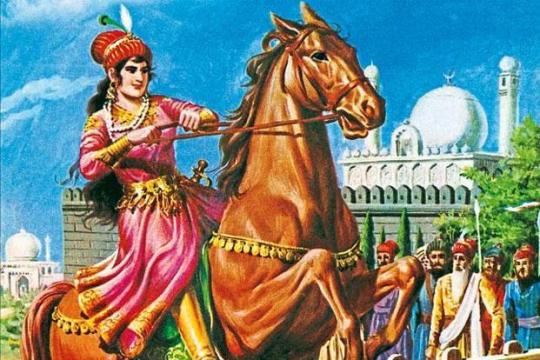
Raziya Sultan - First female ruler of the Delhi Sultanate
Raziya Sultan (around 1205-1240) was the first and only woman to rule over the Delhi Sultanate in India. Though her reign was short, she’s regarded as one of the most able of the Delhi sultans. The most complete contemporary account of her reign was written 21 years after her death by one of her opponents, but remains mostly unbiased.
Raziya’s father, Shams-ud-Din Iltutmish was a Turk slave brought to India from the Central Asian steppes. As a soldier, he served Muhammad Gori, the founder the first lasting Turkish sultanate in South Asia. Iltutmish was freed in 1206. After the dead of Muhammad Gori, he led a faction of the nobles and deposed Gori’s son, seizing power for himself in 1211 and moving the capital from Lahore to Delhi.
Raizya received the same education as her brothers. She was allowed to attend court and was taught military skills and statecraft. The fact that Iltutmish came from the steppes of Central Asia may have influenced his views. Women from nomadic pastoral societies played an important role and even took part in warfare, since every member of the tribe had to be useful. Raziya thus held important posts in his government, dealing notably with financial matters. Finding her more skilled than her two half-brothers, Iltutmish named her heir apparent.
Such a decision was unprecedented and was met with opposition. When Iltutmish died in 1236, his son Rukn-ud-Din was proclaimed sultan. Provincial governors soon rebelled. While Rukn-ud-Din’s army marched to meet them, Raziya won the support of Delhi’s Muslim population. She took control of the palace and was proclaimed sultan. When Rukn-ud-Din came back, he was executed.
Raziya wore a male garb. She appeared in public unveiled, her hair cut short, with a sword, a bow and a quiver at her side. One of her first actions was to strike coins with the following inscriptions:
“Pillar of Women/ Queen of the Eras/ Sultana Raziya Bint Shams al-Din Iltutmish (Sultana Raziya the daughter of Shams al-Din Iltumish)” and “In the Era of Imam al-Mustansir / Commander of the Faithful, Mighty Sultan / Splendour of the World and the Faith/ Malika Iltutmish, Daughter of Sultan Iltutmish /She who Brings Glory to the Commander of the Faithful”.
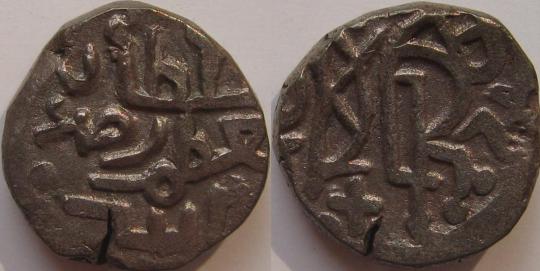
One of her first challenges was to deal with the rebel governors of the western provinces. Though she had few military forces at her disposal, she was a skilled commander. Her tactics were bold and she led her army from the front during battles. She also used propaganda, threats and bribes and managed to crush the rebellion.
As a ruler, she was competent and fair and notably established several educational institutions and public libraries. Her power was still threatened and conspiracies led her to become more and more authoritarian, notably sentencing the governor of Gwalior to death. Rumors spread that she had an affair with a slave and traditionalists opposed the rule of a woman. Local governors started to show their defiance. When a revolt arose in Bathinda, she led her army to crush it, but was defeated and captured. One of her half-brothers was named sultan in her place.
Raziya’s captor, Altuniah, seeing himself rejected from the political maneuvers, decided to ally himself with her. The two married and agreed to share the power. Raziya rode toward Delhi at the head of her army, but her troops were dispirited. She was once again defeated. In one account, she and Altuniah were captured and beheaded. In another, she escaped, but was killed by a farmer who wanted to steal her valuables.
Even though she reined only 4 years, Raziya is still regarded as one of the most capable Delhi sultans. Minhaj-us-Siraj wrote in 1261 that:
“Sultan Raziya was a great monarch. She was wise, just, and generous, a benefactor to her kingdom, a dispenser of justice, the protector of her subjects and the leader of her armies. She was endowed with all the qualities befitting a king, but she was not born of the right sex, and so in the estimation of men, all these virtues were useless”.
References:
Ali Adam, “Sultana Raziya of Delhi: Pillar of women and queen of the eras”
Hoover James W., “Raziya, Sultan”, in: Higham Robin, Pennington Reina (ed.), Amazons to fighter pilots, biographical dictionary of military women, vol.2
Priyamvada Pooja, “Razia Sultan: The first and last woman ruler of Delhi Sultanate”
#13th century#india#indian history#Raziya sultan#razia sultan#warrior women#warrior queen#women warriors#badass women#women in history#female soldiers#female rulers#queens#muslim women#women in war#Delhi sultanate#military history#women's history month#women's history
173 notes
·
View notes
Text
Hindus should turn Atheist, to save India. via /r/atheism
Submitted June 26, 2020 at 04:56AM by Sankha_69 (Via reddit https://ift.tt/31mkUkb) Hindus should turn Atheist, to save India.
I am an Indian Bengali atheist , born in a Hindu family. I did not turn atheist , I was born an atheist.
From very childhood I was not at all attracted to the rituals, as it was huge waste of money. Whenever I questioned the rituals I was insulted , my parents said to me,” you are just a child , you know nothing about religion, you don’t know the importance of god, many great men believe in god so you must too, you have become arrogant , why are we even sending you to school. Look at your nephews and nieces they believe in god and they are better in academics than you , you will just remain a low-life farmer while they will become sucessful people, blaaah blaaah blaaaah.......” .
When the Pandits(males) arrive to start the puja(ceremony) the women of the house have to was his feet, which is very misognistic. Apart from personal pujas at home there are community pujas also , too many community pujas take place in a small area and the money have to be given by common people , if anyone dosen’t give they are harassed. They are too many pujas also , in hinduism , as there are too many gods in Hinduism. After the puja ends , the idols are immersed in holy water sources , as there are too many pujas many times blood is drawn between different groups as to who will do the immersion first. During the immersion ceremony , large processions are taken out which literally fucks up the traffic along with very loud DJ sounds in the open streets , 8 to 10 processions per day for almost 3 to 5 days in a single area , say good bye to the Old and the heart patients. Unnecessary bursting of fire crackers at an un precedented scale adding to more sound pollution and air pollution. The large cases of sexual harrasment , rapes during such processions is mind boggling. So much for imaginary super heroes who were not there to protect us from the Islamic invasion.
On every Saraswati (Hindu Godess of Education) Puja my parents would force me to give anjali( divine offering) to Saraswati , so that I can get good marks in Mathematics but every time I scored poor in Mathematics. Yes I got better in maths from class 9 , when I got a teacher who made me fall in love with maths , apart from syllabus text books I also solved many olympiads , out of syllabus text books, instead of memorizing case studies , formulas I learnt general problem solving skills. The sad part is all the credits was taken by goddess saraswati.
When I grew up ,the seeds of Atheism grew big , as I came to know about the obvious social evils of Hinduism . I will describe them elaborately but first I would like to say some thing about it.
Hinduism is very much like Islam , just polytheistic. Hindus are not more liberal than Muslims or Christians . the problem is Hinduism is not a proper religion founded by someone, so Hindus are not united and community driven ,fueled by religion to spread their religious dominance across the world .Hindus of one part do not feel for Hindus of another part , that’s why they got so easily banged by the muslims and christians .Hinduism is a collection of scriptures – veds, purans, upanishads and practices – rituals , yoga , ayurved, many of which have already been corrupted by the majority upper caste Bramhins and Kshatriyas to consolidate their social dominance over women and lower caste people , even before Judaism, Islam and Christanity were born. When the muslims invaded India they called the people of Indian Subcontinent Hindus( persian word which means – people of the Sindhu river) , at that time in Different parts of India different sects of people( Marathis, Gujaratis, Bengalis, Tamils, Shikhs, Kashmiris, Rajputs) worshipped different vedic gods in different ways , each region had a prime god of worship, these different sects did not go well along with each other , even between their own sects they were divided into many kingdoms. Now when the british planned to conquer india they were not so effective in countering the muslims , as muslims tends to be more community oriented, will do anything to save islam and they also had support of many hindu rulers. The British divised an ingenious plan , they divided the Hindus and Muslims by giving an identity to the Hindu rulers that all Hindu rulers of Indian subcontinent belong to an original, ancient, prosperous , common, vedic religion of India called Hinduism and that the muslims had looted them, destroyed their temples, thus Hinduism was born.
Now the many social evils of Hinduism-
Misogny – Hindus worship a menstruating woman – Kali, Girl childs are worshipped as Goddess but when they grow up they are not allowed to enter the main shrine of temples as they are of menstruating age. Menstruating girls are considered as impure. What hipocrisy.
Female Infanticide(banned by British) – Killing of girl childs by immersing them in milk and playing a band during the process to supress the voice of the dying child. Girls were married along with huge amount of money and gold , that’s why girls were seen as a burden on family , so they were killed . It led to one of the most serious crisis in Indian society , for every 1 girl there are 10 to 15 boys . This led to rise in rape cases , in many rural areas 4-5 brothers married 1 girl. Modern Hindus still dosen’t accept this, their excuse- it is not in the vedas , so only few people did it.
3.Sati(Banned by British ) – Buring alive of young widowed girls along with their dead husbands. Raja Ram Mohan Roy during Bengali Hindu Renassaince championed this cause and got it banned with the help of British. Ishwar Chandra Vidya Sagar another Bengali revolutionary started widow remarriage . All these were met with huge dissent from the hindus . Modern Hindus , especially of North India denies it and hates Raja Ram Mohan Roy and Ishwar Chandra Vidya Sagar and call them British dogs , their reason , well you already know what it is.
DevDasi System(Banned)- The aristrocratic temple priests used to run brothels inside the temples . The most beautiful Hindu girls chosen to dance before god and then sexually exploited by the Kshatriyas and Bramhans.
5.Breast Tax(Banned by British) – The lower caste women were not allowed to cover up their breast, the upper caste men had the right to touch their boobs any time for pleasure. This happened mostly in south India. Those who wanted to cover up would have to pay a heavy tax depending on the size and weight of their breast and it was measured by aristocratic men lifting it by hands. Things changed when a woman covered her breast and when the men came for the tax , she cut her breast and gave it to them . After that a huge revolution started and it got banned.
6.Caste System- This is the most pathetic problem in Modern Indian Hindu Society . The Bramhans and Kshatriyas had all the privileges – education , money , even drinking water and food . The shudras – dalits are seen as lower caste they didn’t have any rights. Their only duty is to serve the uppercaste . They were economically , physically, sexually exploited for thousands of years , starting from the Vedic civilization. Those who rose against the upper caste are killed in the name of god.
Honour Killing – If a Upper Caste girl marries a Lower Caste boy , the girl’s family kills both of them by hiring murderers. There are still a special type of injustice system in many rural areas called Khap court , where the girl is gangraped by the men of whole village on charges of eloping. Again don’t be surprised if Indian Redditors denies it.
8.Economic exploitation – A large amount of social welfare money are wasted by all levels of Indian goverment in organising festivals for appeasement politics , that’s why development work is so slow in India.( Same is true for Muslims and Christians), bcoz Indians put religion above development and then cry when China bangs India from the front . Earlier also Bramhins and Kshatriyas fooled people to keep money in temples , saying god will protect them and then later looted the money .
Indian War of Independence – Yes , this might come as a surprise , but it’s true. The cancer of religion is so deep rooted in India that no Cultural and Scientific Revolution took place in India like Europe , America , China. What the common people will do was decided by their masters. Now the British favoured the masters , the british protected them against people’s discontent and rivals , in return they will be under british rule and supply everything the british needs. The masters enjoyed huge luxuries till they are British puppies. Problem arised when the British started interfering with the religious beliefs of the masters . Actual freedom fighters(Gandhi , Nehru) saw this as a chance and joined hands with the treacherous masters , now they have the support of whole India to overthrow the british. So the Indian independence was never a true one , the people never fought for real development and rule of homeland rather they just wanted to stop the british from interfering in people’s religious matters , which of course were the social evils I mentioned above. Basically we traded one oppressor for another.
10.Psuedo Science – This topic is vast , there are innumerable examples. Hindus always insisting areoplanes, internet , nuclear missiles were invented during the Vedic ages. The wooden scriptures are still ok to this day but their aeroplane , missile factories dissapeared , I don’t know how ? Cow urine can cure cancer, corona .
You see why I mentioned the “Banned practices “ is bcoz it was banned by the British. The British didn’t touch the Caste System and it is still there. Had the British not banned the others , they would also have existed to this day. The cancer of religion is destroying India.
5 notes
·
View notes
Text
Christian Solidarity: The Abyssinian-Adal War

That time when Portuguese Roman Catholics and Ethiopian Orthodox Christians fought against the Ottoman Empire and their Somali allies
During the Age of Discoveries, Portuguese sailors made several voyages into the East and gained contact with several peoples. One of them was the Abyssinian Empire (modern day Ethiopia) which was beset for more than a decade by their arch-enemies, the Adal Sultanate of Somalia. They intervened on the side of the Abyssinians not only because they were Christians (even if Oriental Orthodox), but because the Adals were aided by the Ottomans, who were the Portuguese’ arch enemies in the Indian Ocean.

Originally known in ancient times as the Kingdom of Aksum, Ethiopia was the second nation to adopt Christianity right after Armenia and before the Roman Empire itself. Legends claim that the Ark of the Covenant is guarded in the Church of Our Lady Mary of Zion. They were an valuable Roman ally against the Yemenites, Arab tribes and the Sassanid Persians. That changed after the rise of Islam and the Rashidun Caliphate’s conquered the region that is today’s modern-day Sudan, cutting off the Ethiopians from the rest of Christendom.
Centuries have passed and power between different Islamic powers changed between the Rashidun, the Umayyads, the Abbasids, the Mamluks and etc., with the surrounding modern-day regions of Sudan and Somalia being Islamicized while Ethiopians were completely isolated and trying to preserve their cultural heritage. In 1240, they were ruled by the Solomonic dynasty, a noble house that claimed directed descent from the House of King David, whom Christ Himself descended to, and whose rulers belonged to the Abyssinian people. As such, Ethiopia was also alternatively known as the Abyssinian Empire.
Meanwhile in Europe, the Iberian kingdoms of Portugal and Spain finished the Reconquista - the period where their own land was under Islamic occupation - began voyages around the globe in order to reach East and get around the Ottoman Empire, which held a monopoly of trade over the precious Asian goods. Materialistic riches weren’t the only reason: the search for a mythical figure known as Prester John, a Christian king who ruled over a rich empire surrounded in a sea of pagans who was believed to be in either India or Africa. While the exact origin of it’s legend is unclear, it first emerged around the time of the Mongol invasions while the Crusades were still ongoing. At one point Genghis Khan (who was a Tengriist, not a Christian) was believed to be Prester John for having defeated the Kwarazmian Empire (modern-day Iran) and later his grandson Hulagu when he crushed Baghdad and ended the Islamic Golden Age.

The search for Prester John was of great importance because it was believed he could help the Christians in a future Crusade, and at the time, the Ottoman Empire was waging a jihad to invade Europe and had already conquered the whole Balkans and southern Ukraine. The Portuguese were already making several expeditions around the globe and managed to gain contact with Ethiopia which was considered a possible candidate for Prester John’s kingdom due to a delegation of Ethiopians ambassadors making themselves known to Europeans in 1306, though contact with them was sporadic at best. In 1520, they established relations with Emperor David II, whom they referred to as Prester John (or Presto João in Portuguese).
Ethiopia’s neighboring state, the Adal Sultanate, was in state of anarchy until it came under the control of Ahmad ibn Ibrahim al-Ghazi (”al-Ghazi” meaning the Conqueror), an Somali imam and warlord who would begin a whole new jihad with the Battle of Shimbra Kure in 1529. The victory came at a heavy cost but it solidified the Adal forces’ morale, providing proof that they could stand up to the sizable Ethiopian army. The tide of the war turned to Ahmad’s favor when the Ottomans provided him with cannon fire which terrified the Ethiopians and made them disperse in the Battle of Antukyah. For the next 13 years, the Adal jihad wrought terror on the Ethiopian highlands, with churches being desecrated and turned into mosques, cities plundered, non-Muslims oppressed, women and children taken as slaves and the emperors incapable of halting them. At the same time, the Portuguese were waging war with the Ottomans over sea hegemony and upon hearing the cries of help for his allies, they arrived in 1543 to help them.

The Portuguese commander Cristovão da Gama arrived one year after David II had died and his son Gelawdewos (Claudius) was the new Emperor. Gama’s forces were well equipped with a thousand arquebuses, an equal number of pikes and several bombards, and in the Battle of Bacente, they dealt the first serious victory against Ahmad’s 1000 jihadists with only 400 men and losing only 8 men. A mosque in the hill which used to be a church before being occupied by Ahmad’s men was re-consecrated as a church and a mass was held on the next day to Virgin Mary where both Portuguese Roman Catholics and Ethiopian Orthodox Christians prayed together.
The events at Bacente alerted Ahmad that a hostile army had entered the area, and he marched north to confront it, meeting Gama at Jarte. The imam made the first contact, sending a messenger to Gama to demand that the Portuguese force either leave Ethiopia, join the imam, or be destroyed. On the imam’s orders, the messenger produced the gift of a monk’s habit, an expensive insult to Gama. Gama responded with his own messenger, who delivered “a few lines in Arabic”, stating that he had come to Ethiopia “by order of the great Lion of the Sea” and on the “following day he [Ahmad] would see what the Portuguese were worth”, and delivered Gama’s own insulting gift: a pair of “small tweezers for the eyebrows, and a very large mirror – making him out [to be] a woman.”

Cristovão was proven right and the next two battles he dealt even more crushing defeats to Ahmad, who was sent with his tails between the legs and the population beginning to revolt against him. Now with the tide turned to his advantage, he pursued the imam to the south to confront him at Wofla. However, when he found him, Ahmad had many times the troops waiting for Cristovão as well as many more muskets which were provided by the Arabs and the Ottomans. Despite their bravery, the Portuguese were defeated and Cristovão da Gama was taken captive and brought to the imam’s tent. Ahmad was impressed with the Portuguese commander and tortured him in an attempt to convert Gama to Islam, probably to crush the Ethiopian’s resolve in making their ally renounce Christ and embrace Muhammad. But as an devout Catholic and a descendant of the brave Crusaders of the Reconquista that fought to drive out the Moors out of his land, he would not do it. And so Ahmad beheaded him like so many Christian victims of Islam before and after him.

While Gama’s death was a huge blow to his allies, the Ottomans were displeased with Ahmad’s decision since they were hoping to keep him hostage to be used to their advantage against the Portuguese in their greater war. When all seemed lost, Emperor Gelawdewos had joined the survivors, and seeing the number of men who flocked to the Emperor’s standard “we went to the Prester”, and “begged him to help us avenge the death of Dom Cristovão”, Gelawdewos agreed to march against the imam using the weapons they found stashed in their camp at the Hill of the Jews.
The Ethiopians and Portuguese faced the Adal and their Ottoman allies at the Battle of Wayna Daga where victory seemed lost with the Gelawdewos’ 9,000 troops against Ahmad’s 15,000. However, Ahmad was recognized by the Portuguese arquebusiers, who directed their combined firepower at him, and one of them shot the imam in the chest with a fatal shot. Even though numerical advantage was on their side, the imam’s followers immediately fled the battlefield when hearing about his death, since they followed a leader, not a cause and pragmatically looked to their own well-being - quite the contrast of the loyalty Cristovão inspired in his own men who were willing to fight to their deaths to avenge him. The moment the Somalis left their camp, the victorious Ethiopian army poured in, slaughtering everyone they encountered except for women and children. Among the women were numerous Christian captives, some found sisters, others daughters, others their wives, and it was for them no small delight to see them delivered from captivity.
Wayna Daga marked the end of the war as a stalemate between Ethiopia and Somalia (whose rivalry is traced from this crusade/jihad). Other problems would soon plague them like the Oromo migrations, but the Adal would not represent a serious treat to the Ethiopians again. Nevertheless, the war left an indelible mark in their history as the historian Paul B. Henze notes:
In Ethiopia the damage which Ahmad Gragn did has never been forgotten. Every Christian highlander still hears tales of Gragn in his childhood. Haile Selassie referred to him in his memoirs, "I have often had villagers in northern Ethiopia point out sites of towns, forts, churches and monasteries destroyed by Gragn as if these catastrophes had occurred only yesterday.
Nevertheless, it was thanks to the bravery and sacrifice of men like David and Cristovão that the local practices were preserved, and the Ethiopian Orthodox Church still remains today.

Sources:
Between Islam and Christendom: travellers, facts, and legends in the Middle Ages and the Renaissance
The Portuguese Expedition to Abyssinia in 1441–1543.
24 notes
·
View notes
Text
art.sensuality.hinduism . an equisite perfection of sculptures ~KHAJURAHO

~ kandariya mahadev temple
Khajuraho was an ancient city in the Madhya Pradesh region of northern India. From the 10th to 12th century CE it was the capital of the Chandella kings who ruled Bundelkhand. Khajuraho is popular for its group of artistic temples which were built by the Chandela rulers between the 10th and 12th Century. Chandela rulers were the great patrons of art and this is the reason that the Khajuraho group of temples is known for its sculptural wealth. Despite Khajuraho’s once great reputation as an important cultural centre there are no surviving non-religious buildings, but the presence of 35 Hindu and Jain temples make it one of the most significant historical sites in India today and worthy of its name given by the 11th century CE Muslim historian Abu Rihan Alberuni as ‘the City of the Gods’. Khajuraho is listed by UNESCO as a World Heritage Site.There were some 85 temples constructed during the aforementioned period but only 25 temples remain in the complex today.
The Khajuraho temples are even mentioned in the records of Al Biruni and Ibn Battuta. All the temples are built out of fine sandstone except Chausath Yogini, Brahma and Lalguan-Mahadeva temples constructed out of granite.
HISTORICAL BACKGROUND ~
Most of the Khajuraho temples were built between 950 and 1050 CE during the Chandela Dynasty. According to histories, the temple site had 85 temples by 12th century and 25 only survived, of which the Kandariya Mahadeva Temple built by King Vidyadhara is the famous for its intricate sculptures and arts. Kings Yashovarman and Dhanga are famous for their construction of The Lakshmana Temple and Vishvanatha Temple respectively.
Many of the currently surviving temples contain inscriptions that most of them are built between 970 and 1030 CE. The first recorded mention of the Khajuraho temples is in the accounts of Abu Rihan al Biruni in AD 1022 and the Arab traveler Ibn Battuta in AD 1335.
Khajuraho is believed to be the religious capital of Chandelas. The group of temples was enclosed by a wall with 8 gates, with each gate flanked by 2 date/palm trees. Hence, it is called as Khajura-vahika meaning Date Bearing. Khajuraho is also mentioned as Jejakbhukti in historical records.After the fall of Chandela Dynasty, Muslims invaded the region and the temples were hidden under forests from 13th to 18th century until they were rediscovered by T.S. Burt, a British surveyor in 1830.
The Chandelas were followers of the Tantric cult which believes that gratification of earthly desires is a step towards attaining the ultimate liberation. Tantrism has been mostly misunderstood and the Philosophical part of Tantras like the Mahanirvana Tantra have been totally forgotten. This was one of the reasons why Tantrics perished. Nevertheless it remains a distinct path of Spiritual Practice though it has very few followers all over the world.
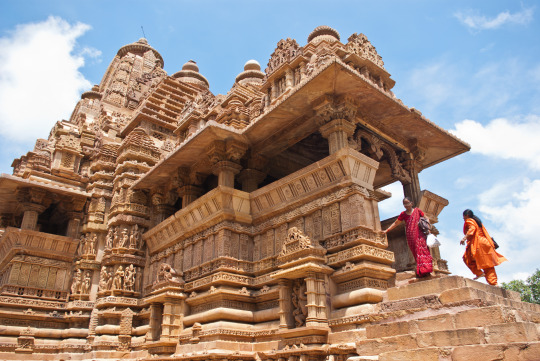
Categories of Sculptures
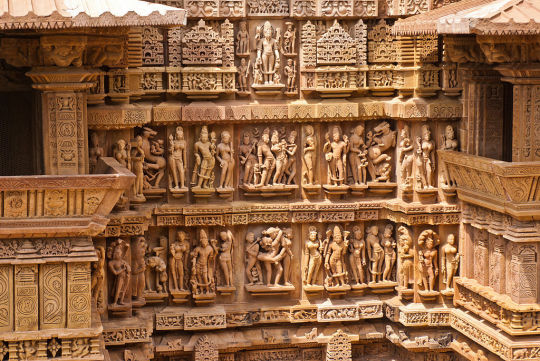
Based on their nature, the sculpture in Khajuraho is categorized into five. The first group of sculptures is the cult images. The second category of images that occur in the niches comprises of enclosing divinities, family, and the attendants. The third and the most dominant group of sculptures are that of the apsaras and the sura-sundries who are portrayed in dancing postures and graceful nymphs respectively.
The fourth group of sculptures is secular images depicting scenes like teacher and student, dancer and musicians, erotic couples, etc. The last category of sculptures is that of animals including the mythical beasts. We find the sculptural art at its zenith in the Kandariya Mahadeva Temple.
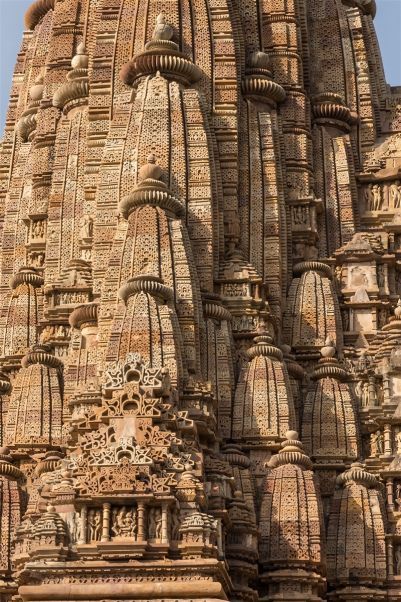
~a close architectural overview of Kandariya mahadev temple, khajuraho.
The Importance of the Erotic Sculptures
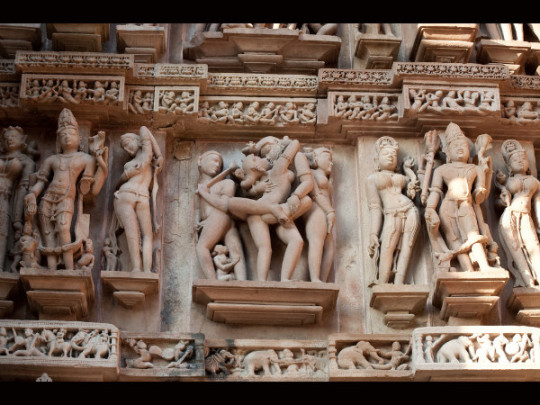
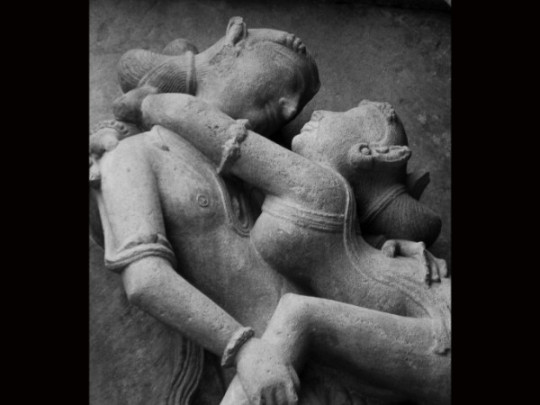
Amongst all the group of sculptures mentioned, the erotic sculptures are considered to be exemplary in highlighting the sensuous human emotion. To quote art historian Krishna Deva, ‘the sculptural art of Khajuraho surpasses the medieval school of Orissa in revealing the sensuous charms of the human body’. Some consider the erotic sculptures as an illustration from the ancient text of Kamasutra. The stress is laid on considering sex as a source of creation. The sensual element has always been described in the ancient literature and folk tradition.
Western, Eastern and Southern Group of Temples
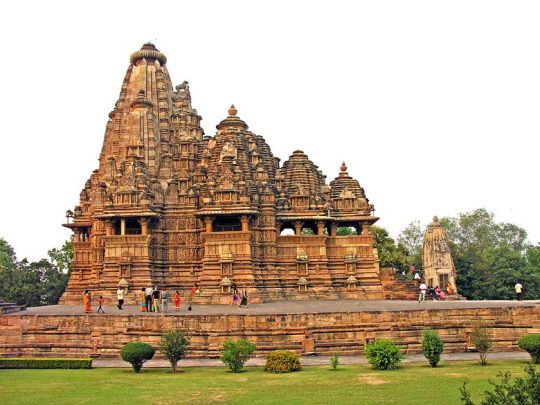
~ Vishvanath temple
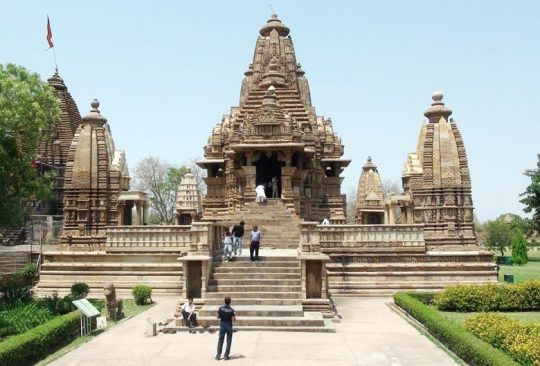
~Lakshmana temple
The western group of temples is the most visited ones by the tourists. It comprises the Lakshmana temple, the magnificent Kandariya-Mahadeva Temple, Chitragupta temple and Vishvanath temple. Kandariya Mahadeva is the largest monument in Khajuraho with its architecture depicting the splendid and considerably taller sculptures and also the Central style of architecture. The eastern group of temples includes the Brahma temple, Vamana temple, and other Jain temples.
Means of Transport ~
By Air: The nearest airport is Delhi International Airport. From Delhi , a connecting flight plies to the Khajuraho Airport which is 2 km from the Khajuraho City.
By Train: Khajuraho has its own railway station named after the famous temple. The railway station is around 5 km away from the popular tourist spots of Khajuraho. Rental cars are available from the station premise to Khajuraho temples.
By Road: Khajuraho is well connected by roadway to major cities like Jhansi, Orchha, Katni, Chattarpur etc. Many kinds of buses are available that one can select from to reach Khajuraho from different parts of North India.
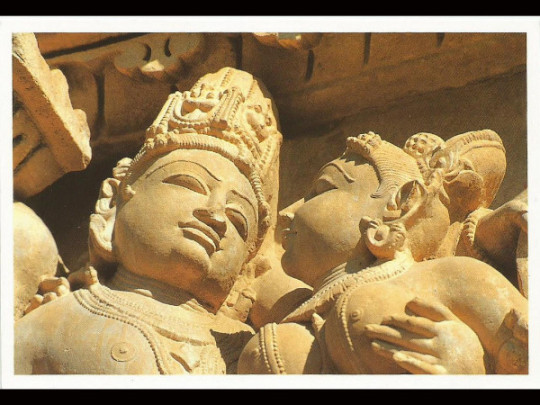
‘The basic Universal Divine Energy (Shakti) is a symbol of the union of man and woman and it is the main spiritual emotion in Hindu art depicted in the man-woman sculptures seen in Amravati, Khajuraho, Konark, etc.Here Divine Energy (Shakti) manifests in the man-woman union, the basis of Vedic art and culture. Sculptures in the Ajanta caves are also a depiction of the man and woman, but sexual congress is prohibited in the sculptures’. Bharatiya SanskrutiKosh, pages 166-169
29 notes
·
View notes
Text
Raziya Was India’s First Female Muslim Ruler and A Brave Warrior
Raziya Was India’s First Female Muslim Ruler and A Brave Warrior

Given the fact that Shams-Al-Din Iltutmish entered the court of the Delhi sultanate as a Turk slave and died as Sultan of Delhi, might have been the first indication that his daughter, Jalalat-Al-Din Raziya was destined for greatness. In 1236, Jalalat-Al-Din Raziya, historically referred to as Razia Sultan, ascended the throne as the first female ruler of the Delhi Sultanate. Though, her story might be perceived as romantic in popular culture, reality was anything but romantic. The First Female Successor for the Throne Iltutmish arrived at the Delhi sultanate as a Turk slave. He grew to be a great favorite of his master, Qutb Al-Din Aibak, the first Sultan of Delhi and so was married to the sultan’s daughter Qutub Begum becoming an actual part of the ruling family. With Qutb-Al-Din Aibak, he had a son Nasiruddin Mahmud and a daughter Jalalat-Al-Din Raziya. When Raziya was still a child, her grandfather Aibak died and her father became second Sultan of Delhi. During the final years of his life, Sultan Iltutmish had to make an important decision. Whom would he hand-over the administration of the sultanate? Based on qabliyat (i.e. capability), Iltutmish would have chosen his son Nasiruddin Mahmud, who at that time also ruled as governor of Bengal. Yet, under mysterious circumstance, Nasiruddin Mahmud died and Iltutmish was at a loss. None of his other sons, born from his other wives, were too young to be crowned his successor. His daughter Raziya had already shown her capability of managing the sultanate. When her father left for business or campaigning affairs, she took charges as a competent regent with the assistance of the Sultan’s trusted minister. She had become a well-educated woman, both in formal education as in the Qu’ran. Moreover, she was skilled in martial arts and, thus, an excellent trained warrior, rode both horses and elephants with an exquisite accomplishment and exercised authority with great dignity. Without consulting the ulama (i.e. scholars within the Muslim law), Iltutmish appointed his daughter Jalalat-Al-Din Raziya as his successor, for he saw “the signs of power and bravery” in her. Whenever someone questioned his decision he would reply: “My sons are devoted to the pleasures of the youth, and not one of them is qualified to be king […]. After my death, you will find that there is none more competent to guide the state than my daughter.” As such, Iltutmish became the first Sultan to appoint a woman as his heir apparent.
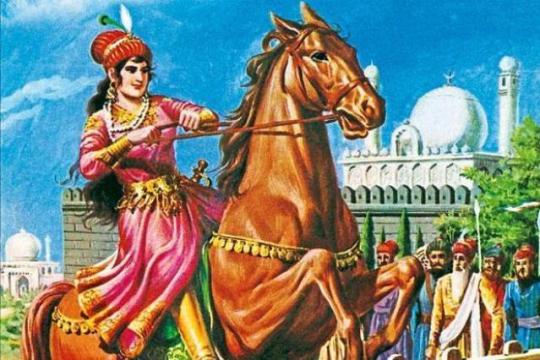
A Devoted Leader of her Empire and Subjects She established schools, academics, research centers and public libraries where both Islamic tradition manuscripts and Hindu works shared places. As a woman, Raziya was not given full support from the noblemen. She only managed to secure her control over the throne by dividing the opposition. After her official accession, many nobles opposed her. Ultimately, she won the majority over and the kingdom slumbered into peace again. She could extend the power of the state widely through the obedience and submission of maliks (i.e. kings) and amirs (i.e. state leaders). By building a system of roads, she could easily inform herself of the affairs in the distant parts of the empire. She linked towns up with villages and built small forts as guard posts around these routes. In addition, she established schools, academics, research centers and public libraries where both Islamic tradition manuscripts and Hindu works shared places. Only one of the many examples that showed that Raziya considered the Muslim community and the Hindu community on an equal footing. Raziya was clearly a devoted leader for her empire and subjects. She listened to her people’s complaints and demands, trying to reserve herself as a guiding hand among them instead of an indifferent ruler. By stating her title to be officially Raziya Sultan, rather than Raziya Sultana, she underlined her rightful credibility as a powerful sovereign leader of the Sultanate of Delhi. As her desire was to keep close relations with her people, Raziya Sultan substituted her female attire with that of a man’s head-dress and tunic, abandoned the veil and rode out on elephant without purdah (i.e. covering of the face). A Conspiracy That Secured the Existing Opposition of Raziya’s Noblemen Letting Raziya assume power, her noblemen had expected their female ruler to be a puppet in their hands. Instead, Raziya openly confessed herself to be an independent leader which caused much dissatisfaction among her nobles. With the arrival of Jamaluddin Yakut, a Habshi (i.e. Ethiopian) slave, the last straw was drawn. Yakut had a calm and dependable nature, something that lead to Raziya favouring him so much to elevate him to position of Amir-i-Akhur (i.e. intendent of the royal stables). This position was a strategic position, very close to the sovereign. Raziya Sultan had basically made a non-Turk commander of her army. She did not intend to counter the power of her Turkish nobles whom, at that moment had monopolized that position, but her choice eventually led to their decision to dispose her. Together, Malik-i-Kabir Ikthiyaruddin Aitigin and Ghiyasussin Balban, set a conspiracy into motion against Raziya Sultan and a key chess piece in their plan was Malik Ikhtiyauddin Mirza Altunia. Malik Ikhtiyauddin Mirza Altunia, a prominent noble man under Raziya’s father reign, had supported Raziya’s accession. Raziya favored him and had him rewarded with governorship of Tabarhinda (Bhatinda). Before his departure to Tabarhinda, he offered marriage to Raziya which she refused stating that her priority was taking care of the empire. Aitigin and Balban took advantage of Altunia’s absence and told him rumors about Raziya’s and Yakut’s intimacy. The fact that Raziya and Yakut were always together, discussing affairs concerning the empire and she asking him advice about strategies, Aitign and Balban could arouse Altunia’s jealousy by telling them that Raziya was in love with Yakut. In anger, Altunia joined the opposition of the rebels, offered his help to depose the Sultan and by doing so, he would receive a portion of the empire. A Prisoner Who Wins Over Her Captor to Win Back her Throne The noblemen could not oppose Raziya in Delhi, as she had joined most her subjects in support for her rule, therefore rebellions were started in the distant provinces. One of the many rebellions came from Tabarhinda, Altunia’s government, a place she never expected rebellion to be stirred. Still, she asked Yakut to prepare the march against Altunia. At that moment, the army was exhausted, having put down a different rebellion in Lahore and Yakut was afraid that victory would come so easily this time. Due to his loyalty, he did not discourage the Sultan. During the battle, Altunia realized that to defeat Raziya and to gain power for the nobles at Dehli, he had to kill Yakut. With the death of the commander of the army, soldiers lost their confidence and eventually surrendered to Altunia. Still trying to inspire her forces, Raziya sultan failed and was taking prisoner. Meanwhile, the noblemen at Delhi assigned a new sultan, Raziya’s stepbrother Muizuddin Bahram Shah. He was a drunkard and finally could serve as the puppet the noblemen wanted. During his reign, the people were oppressed and opponents of the empire were unmercifully killed. Th promise that the noblemen had made to Altunia was forgotten. Raziya, still captured, realized that in order to restore her throne, she had to convince Altunia of fighting against a common enemy. Alluring him with the promise of power and rule in the sultanate, Altunia decided to help her. After their marriage, Altunia and Raziya recruited an army to win back Delhi. A Story Made Romantic It is not known who made the offer of marriage first. In any case, it did not last very long. Nearing Delhi, Bahram Shah knew that the only way he could win was killing Raziya. The people of Delhi were still allied to Raziya Sultan and merely her presence was enough to harden their love and respect for her. Unfortunately, Raziya Sultan was defeated. Not much is known about the cause of her death. Some believe she fought as a valiant warrior on the battlefield until an arrow struck her. Others say she was defeated and fled where her survival was depending on a man who gave her bread and a place to sleep. During her sleep, the man saw a tunic of gold and pearls under her male army garment and realized that the man he had helped was a woman. He killed her, buried her body and took her valuables to sell on the market. Popular culture turns Raziya’s life into a romantic story. The supposed love triangle has been source for various on-screen adaptations: Raziya having an affair with her noblemen but growing overly dependent on the Abyssinian slave, leading to a jealous lover and her subsequent defeat. How many inaccurate versions may exist, we should never forget Raziya Sultan’s true story: that of an independent female ruler who fought until the bitter end for her Empire! Sources Brijbhushan Jamila: Sultan Raziya: Her Life and Times: A Reappraisal (Manohar Publications, New Delhi : 1990) – Chandra Satish: Medieval India: From Sultanat to the Mughals : Delhi Sultanat [1206-1526] (Har- Anand Publications Pvt. Ltd., New Delhi :1997, rpt. 2015) – Dasgupta Shahana: Razia: The People’s Queen (Rupa & Co., New Delhi : 2001) – Eraly Abraham: The Age of Wrath: A History of the Delhi Sultanate (Penguin Books, India : 2014) – Fatima Mernissi, The Forgotten Queens of Islam (Polity Press 1993, 1993)
https://ift.tt/2KXiIGT . Foreign Articles November 26, 2019 at 08:17PM
5 notes
·
View notes
Text
Against Procrastination - Oct 4/19
When I first started planning this trip, several people asked why I didn’t wait until next year when new Grand Egyptian Museum is scheduled to open. It will be the largest museum in the world and will allow the entire Tutankhamen collection of over 5000 items to be displayed at one time (the chariots have already been moved there). There are two reasons I did not wait:
First, it was originally scheduled to open in 2009 and has repeatedly been delayed for everything from political protests to a fire. Taha, my guide, believes it will not fully open until 2022 as major elements of the building’s structure and physical plant are still incomplete. Upon completion, it will then take many months to move the collection to its new home. While I plan to be on the road for a long time, at my age, a missed opportunity to travel somewhere can easily become a permanently lost opportunity.
Second, while the new museum is likely to be amazing, I have found such huge collections to be overwhelming (e.g., Louvre or Vatican museumsI). One can easily end up just ticking boxes on a “must see” or, as Lu-Anne says, trying to see so much that you remember nothing. Besides, missing it provides an excuse to return😊.

This morning, our first stop was the Cairo Citadel atop a high limestone promontory (source of pyramid capstones) overlooking the city. It was built by Salah al-Din (Saladin) in the 12th century to protect from Crusader attacks and to stabilize his rule after conquering the Fatimid Caliphate. It was home to the Mamluk rulers (rebel Ottoman mercenaries) from the 13th to 18th Centuries until they were defeated by Napoleon in 1805 and displaced by Muhammad Ali Pasha (Ottoman Governor) in 1811. He is remembered for building the Mohammed Ali Mosque, the largest in Egypt, with architecture that follows the beautiful dome on dome construction that I first saw in the Blue Mosque and Hagia Sophia in Istanbul.

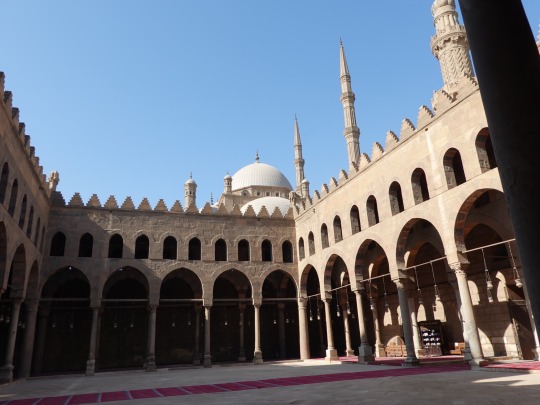
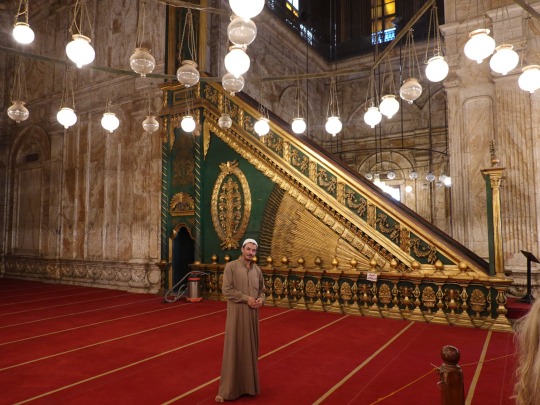
While visiting the Citadel and Mosque I was subjected to the “Unicorn Syndrome” that Lu-Anne and I discussed in the India blog. I encountered several school tours of children from rural areas where I was the first foreigner that they may ever have seen. Like unicorns, I was viewed as a strange mythological beast that they had read about and seen pictures of, but never expected to encounter in the flesh. In each of the boys groups, one brave soul would approach and ask for a selfie. When I agreed, I would be buried in 10 year olds for 15 or 20 minutes until everyone had a souvenir (one group was finally chased away by an old woman aggressively wielding her broom). Girls were far more reticent and I assume such behaviour was seen as inappropriate. Regrettably, I forgot to take any of my own pictures with my new found admirers.

Our next stop was the Mosque-Madrassa of Sultan Hassan. The main courtyard of the Mosque has four teaching areas following the four main schools of Sunni theology. Sunnis are the more conservative branch of Islam adhering very closely to the direct sayings, teachings and prohibitions of the Prophet Mohammed. They are 90% of the Muslims in Egypt and in the world. Shia are also guided by the wisdom of the prophets dependents, particularly his cousin and son-in-law Ali. They are in the majority in Iran and Iraq, with large communities in Turkey and Pakistan. Sadly, this is where The ugly foreign tourist syndrome appeared. Just outside I heard the self appointed leader of a British tour proclaim to his guide in a loud voice: “I think we have all had our fill of these blasted mosques, now we are ready to see something interesting”. Like my mother use to say, “you can dress them up, but you still can’t take them out in polite society”.
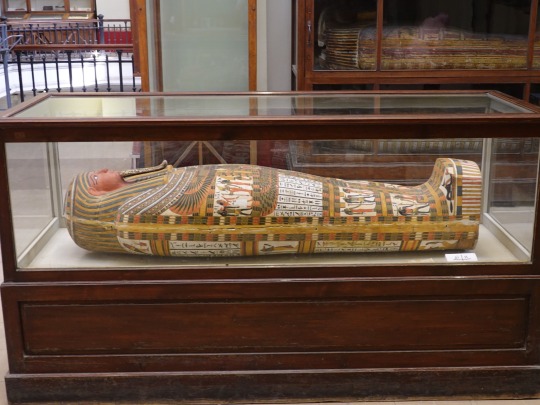
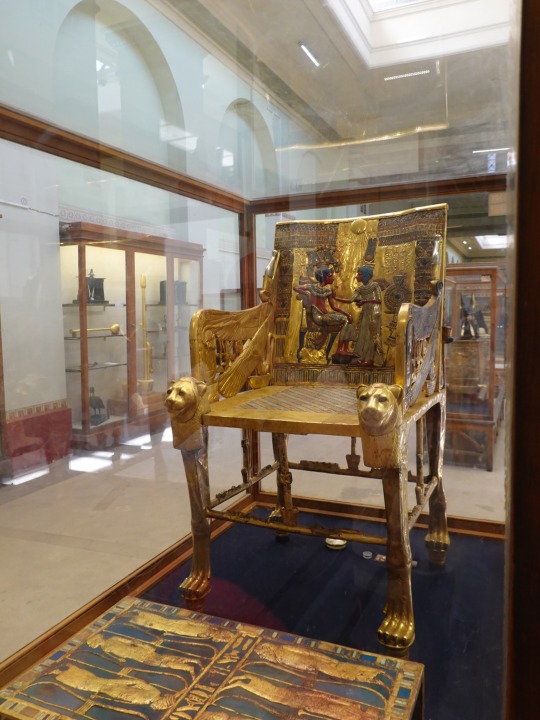
Our final stop was the current Egyptian Museum that appears to be the house of a hoarder but with really neat stuff packed to the rafters. The sheer extent of the collection is mind blowing, with only a representative sample of its 120,000 artifacts on display. I spent about an hour with my guide before my capacity for facts overflowed like the Nile in flood. I finally sent him off to Friday prayers and just wandered for a couple of hours trying to absorb all the wondrous sights as if by osmosis. Of course, the greatest crowds surrounded the Tutankhamen collection (photos not permitted in its treasures room). However, equally interesting to me were treasures from the undisturbed tombs of several Libyan Pharaohs of Egypt (9th & 8th centuries BCE) with their solid silver sarcophagi. Elsewhere, every wall and floor space was filled with sculpture or stacked with case upon case of ornate coffins, coffin masks and papyri that were so fresh and colourful they could have been written last week instead of 4,000 years ago. I took over 200 photos (where do you stop?) and choosing 5 for this post (10 max allowed) meant leaving out dozes that were as good or better
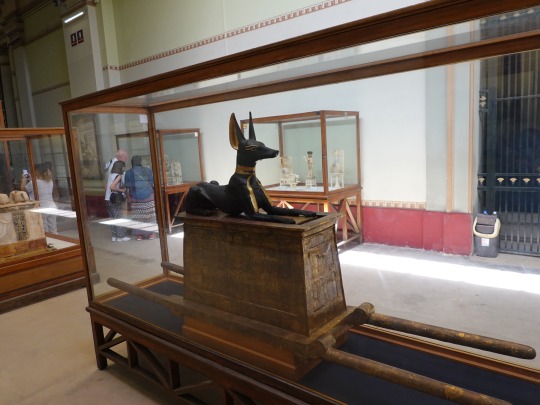
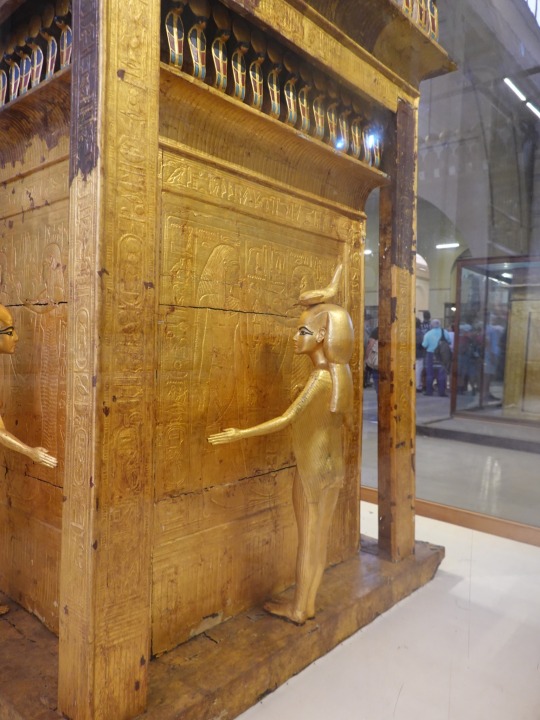
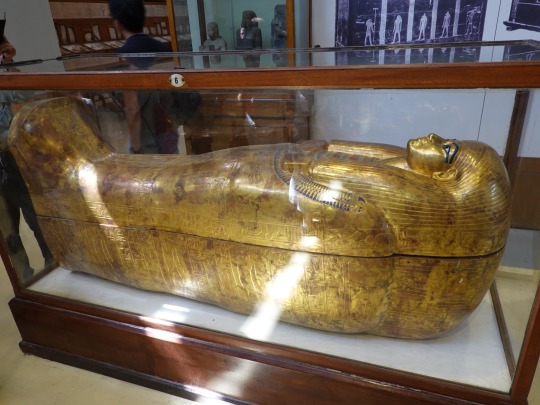
Finally returned to the hotel for blog writing and packing as I have a 6 am flight to Luxor (Thebes) and 4 am pickup
5 notes
·
View notes
Text
50 Awesome Women To Know: Part 7
Halloween is a great time, because why not, to learn more about awesome women. Previous entries are here.
Alba Alonso de Quesada (1924 -- ): Honduran, lawyer and academic, long-term advocate of women, children, the working poor, and organized labor, campaigner against corruption, feminist and reformer, still fighting the global good fight at the age of 94.
Amina of Zazzau (? -- 1610): Nigerian, African warrior queen and conqueror, heroine of many legends and folk tales, who bested male rivals and collected tribute across several regions.
Ángela Acuña Braun (1888-1983): Costa Rican, another Central American woman and lawyer. Specialist in international human rights law, founder of many feminist and legal advocacy organizations, diplomat and ambassador.
Ashani Weeraratna (1971 -- ): Sri Lankan/South African, pioneering cancer researcher and director of the PhD cancer biology program at the University of the Sciences in Philadelphia.
Barbara Sanguszko (1718-1791): Polish, prominent figure of the Polish Enlightenment, poet, society hostess, translator, sponsor of artists, politicians, and intellectuals, philanthropist and religious patron.
Bibi Khatoon Astarabadi (1858-1921): Iranian, one of the first women’s rights activists in the modern history of Iran; educator, author, mother of seven children who also went on to distinguished careers in the public sector.
Brita Tott (c. 1498): Danish/Swedish, had an almost ludicrously colorful career as a major landowner, spy, forger, counterfeiter, administrator, and suspected traitor, who escaped the charges against her and lived into retirement.
Cheryl Dunye (1966 -- ): Liberian-American, highly decorated filmmaker, activist, and college professor, who studies the African-American lesbian and queer experience through film, art, and other mediums.
Diane de Poitiers (1499-1566): French, mistress of King Henry II of France and de facto queen of France for much of his reign (in which she competed with fellow Badass Lady Catherine de Medici). Well-educated, beautiful, and widely influential.
Ekaterina Karavelova (1860-1947): Bulgarian, suffragist, educator, author, and diplomat, instrumental in the development of women’s access to university education in Bulgaria and Eastern Europe.
Elena Cornaro Piscopia (1646-1684): Italian, the first woman known in history to receive a PhD degree, which she did in 1678, in philosophy, from the University of Padua. She dazzled academics from all the distinguished Italian universities (Rome, Perugia, Bologna, and Naples) in a public hearing.
Elizabeth Catlett (1915-2012): African-American, the grandchild of slaves, artist and sculptor who represented the twentieth-century black experience in her work and received many awards and recognitions.
Elizabeth Montagu (1718-1800): British, socialite and social reformer who donated large amounts of her fortune to the poor; founder of the Blue Stockings Society for educated women, and probably a lesbian, as she was reported to have had “no interest in men or marriage” and kept a female companion.
Fawziyya Abu Khalid (1955 -- ): Saudi Arabian, poet, social critic, feminist, one of the most prominent Saudi female poets and outspoken political advocate for the rights of women in the Kingdom.
Frances Kirwan (1959 -- ): British, mathematician, current Savilian Professor of Geometry at the University of Oxford (a position once held by Edmond Halley, among others) and first female holder of the title. Distinguished researcher and teacher of mathematics and fellow of several Oxbridge positions.
Freddie and Truus Oversteegen (1925-2018 and 1923-2016): Dutch, Resistance activists during WWII, who seduced Nazis by luring them out to remote locations for their compatriots (or the sisters themselves) to kill them. Their family hid Jews too, and both sisters lived long lives and died of old age.
Jocelyn Bell Burnell (1943 -- ): Northern Irish, astrophysicist who helped discover radio pulsars (described as “one of the most significant scientific achievements of the 20th century”). Was then excluded from the 1974 Nobel Prize in Physics given to her colleagues in the discovery. Finally received a £2.3 million award for distinguished physics research in 2018, and gave ALL OF IT to help women, minorities, and refugees pursue careers in STEM.
Justina Szilágyi (c. 1455-c.1497): Hungarian, cousin of Matthias Corvinus (the Raven King) and second wife of the notorious Vlad the Impaler (yes, that Vlad). Outlived him and successfully pursued her claim to lands in Transylvania.
Katharine McCormick (1875-1967): American, philanthropist, suffragist, heiress, who went to MIT in the 19th century, and who funded the research necessary for the modern birth control pill. A pioneering advocate of reproductive freedom, who also donated a great deal of money to ensure women’s continued scholarship at MIT.
Khurshidbanu Natavan (1832-1897): Azerbaijani, poet and musical lyricist, social and cultural patron of the Karabakh region who funded civic improvement projects, founder and sponsor of literary societies.
Kittur Chennamma (1778-1829): Indian, Rani (ruler) of the state of Kittur, who led an armed rebellion against the British East India Company and who, while eventually defeated, has become a folk heroine and symbol of resistance against the Raj.
Lama Abu-Odeh (1962 --): Palestinian-American, lawyer, feminist, and professor who currently teaches at Georgetown University, scholar and advocate for Muslims in a post-9/11 world.
Laura Bassi (1711-1778): Italian, physicist and academic; earned a doctorate in philosophy from the University of Bologna (1732) and subsequently became professor of physics there. First woman to hold a university chair in the sciences, instrumental in the study and spread of Newtonian physics.
Leona Vicario (1789-1842): Mexican, heroine of the Mexican War of Independence, feminist, one of the first female Mexican journalists, honored as “Distinguished and Beloved Mother of the Homeland.”
María Abella de Ramírez (1863-1926): Uruguayan, another South American feminist and social reformer, advocate for sex workers’ rights and new divorce laws, founder of South American suffragist organizations, who fought the all-consuming power of the Catholic Church.
65 notes
·
View notes
Text
Jenny’s opinion on important Asians
Hello there, this is Purple and I was forced to write this blog about top 5 most important Asians, feel like those crappy rating channels! Keep in mind that I’m probably writing this at 2 am so most info may not even make sense. Any BS aside, let’s go, woooooo! And since I’m woke AF, I’ll include woman, probably. :>

5. Qin Shi Huang
Ah, the founder of the Qin dynasty, when China got its name and shape. Qin Shi Huang is the mad man that started the Great Wall, an international symbol for China, aka what Chinese people brag about, “You can see it in space!” bla bal bla...NO! Stop it, we get it, you’re proud but shouldn’t you be studying other things that’s not related to a lawyer, doctors or desk top? Other things they should proud about is his unification of the country. Or how now you must pay for a can air because the air there is so polluted? Or how Donald Tru- let's just stay away from politics.

4. Mahatma Gandhi
Well well well, this Indian fella was the leader of the Indian independence movement against British rule. After seeing his people suffering to those white skinned, easily sun-burned Brits, he led the “Dandi Salt March” for this weird thing called a Salt tax. He was imprisoned for many years because you know how white people loves prisons. Gandhi’s hard work paid off and he inspired many people, especially Dr. Luther King Jr for the civil rights movement. His birthday-2nd October-is also now a national holiday for India and an International Non-violence Day.
3. Muhammad
The founder of Islam, the last prophet, the 5 pillars of Islam, … and yup, Muslim. I found so much standup Muslim comedians and it’s crazy how they can make parking spots sounds funny. Guess what? 21% of peeps are Muslim, I mean people. And they don’t eat beef, wooo, another step from selective empathy. And like they played a pretty big role in history, from the father of modern surgery to Saladin vs Crusades.
2. Genghis Khan
We did a whole darn debate about this (and “for” won for both classes) He’s great at battles and tactics and probably the best conqueror back then, now the internet rules. I mean he literally, by himself, was better than all the Roman emperors at conquering. And he created his own mail system, there would be no “Loserville” without him. Weird fact: A lot of people called him daddy- I'll make my exit soon.

Honorable mentions:
Trung sisters:
Two badass sisters that in 40 AD, led the first rebellion against the Chinese, started 1000 years of fighting against the Chinese that ended with Ngo Quyen with his fight on the Bach Dang river. These ladies are not weak, the eldest, Trung Trac chose her country over her husband and let him die in the hand of the invaders.
Ho Chi Minh
I am Vietnamese ok, I want to brag about my country just as much as the Chinese to theirs. Ho Chi Minh City is the new name of Sai Gon, the South capital under the Vietnam war. Do you know how much impact he has on us Vietnamese? He was a great president, like the Obama of Vietnam, just saying~ Ho Chi Minh loved kids by the way, that’s why we had to learn so much about him when we were kids, that’s why we’re so familiar with him and how humble he was.
Saladin
He led the Muslim to fight in the Third Crusades. Very noble of him because he did not allow Muslim to steal from them, which is cool but wouldn’t work for me, I mean they rich.
Timur the Lame
According to Wikipedia he emerged as the most powerful ruler in the Muslim world. He took inspirations from Genghis Khan, second place, and saw himself as his heir. Sadly, out of the millions of descendants, he wasn’t one.
Empress Wu
Also from wiki, yay,Wu Zetian was the concubine of Emperor Taizong. After he died :<, she married his ninth son, Emperor Gaozong. She expanded China out of its territorial limits Wu's leadership resulted in important effects regarding social class in Chinese society and in relation to state support for religion, education, and literature.

1. Jesus
I don’t even think I should explain anything, I mean, it’s Jesus. When you say “Oh My GODDDDDDD” who do you think is the god, Allah- whoops I meant Jesus. You can’t exactly go to a country without a church, but you’re not going to North Korea and Saudi Arabia just to prove me wrong, are you? We associate the cross with God and Holly right, and you wouln’t want to upset 33% of people follow this religion, right?

Ok, that’s enough now, I wrote more than 800 words and I’ll be surprise that you read all you it. Sorry for putting you through torture, Purple’s out!
2 notes
·
View notes
Note
Which were Elizabeth's most important achievements as Queen? Was her reign positive or negative? As a Queen, was she better or worse than monarchs of other countries such as Spain or France? And a final question: What was her role in the matter of poor people, Poor Laws, charity systems, etc.? Was it positive or negative?
Sorry that this comes so late. I was very busy these past few weeks and you ask many and very big questions that took quite a time for me to formulate the answer (not least because I struggle to put my thoughts in English lol), and tbh I’m not entirely happy with the outcome… but anyway here we go.
For starters. Elizabeth was an unmarried woman of questionable legitimacy who ruled and held power for 44 years and in the process raised her country’s international standing in the age when religious differences created by the Reformation in the first half of 16th century had grown into religious wars in the second and had shaken traditional waysof worship and living, and when “the law of England did not recognize any status for the average woman beyond daughter, ward, wife or widow”. In my opinion, it’s an impressive achievement in itself. And when I see people belittling Elizabeth and claiming that anyone could have done that and more, I’m like - no, guys, not anyone. Mary Stuart across the border couldn’t and was deposed despite having a son and heir. Neither Catherine de Medici as politically astute as she was, nor her sons one of whom was assassinated couldn’t prevent their country slipping into religious wars between catholic and huguenot factions. This didn’t happen in England. Elizabeth was a remarkable and resilient leader who knew how to manage power and created a strong team of men around herself, a strong government. I posted here some time ago, in my opinion, a very apt quote on Elizabeth’s virtues and strengths as a monarch.
If I look at Elizabeth’s contemporaries I would compare her to Philip II. Philip had an enormous advantage of being a man of unquestionable legitimacy and trained for kingship that Elizabeth hadn’t (she needed to learn along the way by herself) and Philip’s Iberian realms weren’t affected by the Reformation so much as England but I think in some ways they were similar. I recall Philip’s biographer Geoffrey Parker comparing them in the book on the Spanish Armada writing that Elizabeth’s practice of seeking the opinion of each her councilor individually was similar to Philip’s style of government. Only Philip usually did that in writing, while Elizabeth - verbally. They both faced challenges during their reigns (although not quite of the same character) and both held their countries together with similar methods.
So besides that basic one I would say her most important achievements were:
Religious settlement of 1559 together with the Thirty Nine Articles that set the doctrine of the Church of England.
Expansion of trade, especially to the Mediterranean world, Muslim world, the Baltic, India, America. To achieve that she worked in a close partnership with merchants and as David Loades put it she set her country’s “commercial development on a course that was eventually to be spectacularly successful”.
Maintenance of peace for a lengthy period of time that apart from the other stuff contributed to the growth of population.
Modernization of the navy. According to Patrick Williams: “From the very beginning of her reign Elizabeth showed an intuitive understanding of the need to defend herself and her realm through the use of naval power. In the year of her accession Elizabeth established a commission of enquiry to investigate the condition of the navy. (..) Elizabeth asked her first parliament for money for “the continual maintenance of the English Navy’ so that it could ‘be ever in readiness against all evil happs; the strongest wall and defence that can be against the enemies of this island’. So that the navy could be properly organized and controlled, Elizabeth developed the structure of the Navy Board, ordering it to meet at least once a week and to report to the Lord Admiral. She developed the principle that a dozen or so ships should be always on standby to be ready for mobilization at a fortnight’s notice and had the officers of the Navy Board work towards standardizing guns on her ships and organizing a system of providing victuals in time of war and peace. In providing for the navy, Elizabeth broke with her habitual parsimony; in the years 1564-74 she spent about six and a half per cent of her income on the navy.”x The most important changes took place in the 1570s “when the queen’s shipwrights introduced a new design, known as ‘race built’, which involved a reduction in the ‘castles’ fore and aft, sleeker lines and a longer gundeck. The ships now carried fewer soldiers and a far larger complement of seamen, so their rigs and sail-plans could be made more complex and efficient”.x Many old ships were rebuilt to this new design.
Also, recoinage of 1560-61; and for some historians it’s also the development of a military system. Thus Simon Adams in his essay ‘England and the World under the Tudors, 1485-1603′ claims that “the modernization of the Crown’s military forces was one of the great under-appreciated achievements of the reign. This was a slow process that began in the wars of Edward VI’s reign and was not complete until the 1580s. Its two great successes were the substantial English contingent in the Dutch army after 1585 and the reformed militia. The former were the equals of the best of the Continental professionals, while the latter, however flawed, was like - the Poor Law - a precocious experiment in the creation of a national system quite unparalleled on the Continent.”
On the matter of the poor. The population expansion during the century and the lack of agricultural land to support people led to increase of the number of poor, and the widespread belief that the poor were just lazy and idle people, the war with Spain and bad harvests of the 1590s didn’t help either. Elizabeth’s and her government’s response to this problem was the Poor Laws. I posted a quote on them here which sums them up nicely. The fact that the acts of 1597 and 1601 remained the basis of poor relief in England for more than two centuries underlines their importance and I think they were the steps towards the modern state.
Also, I found that Ian Mortimer states in his book that from her royal revenue Elizabeth gave away “no less than £ 2,000 in alms” but I don’t quite get is it meant to be in the whole period of her reign or not. He cites as his source The State of England Anno Dom. 1600 by Thomas Wilson ed. by F. J. Fisher but I have no access to this source.
As for your question about positive or negative I don’t believe that the reign of any of these early modern rulers can be described in such black and white terms. There were both positive and negative things.
12 notes
·
View notes
Text
Best cities to visit.
1. Bangalore:
In Bangalore, there are different issues with visit with your loved ones. Bangalore isn’t just an excellent working environment yet what’s more a psyche blowing spot to visit for redirection. This nursery city is by and large clowning around in giving doubtlessly the best family in the middle of between the hustles of Bangalore city.
For youngsters and the vivacious on a fundamental level, India’s IT capital offers a ton of tomfoolery and redirection critical entrances. Picnics, visiting, extraordinary exercises, or basically having a tear are significant entryways for the young people. One more convincing motivation to pass your family on to Bangalore is that the city values amazing climate for a really long time.
Assuming that you have the significant chance to visit the city during a celebration, you ought to do as such considering how the city is decked up and the events are commended with goliath significance and distinction and gives probably the best family base camp in Bangalore. Checkout the adventure resorts in Bangalore to live it up.
2.Madikeri Post :
Madikeri Post is an enchanting legacy structure in Coorg that comes from the last piece of the seventeenth hundred years. Inside the fort’s walls was a castle. The fort, which was at first raised by Mudduraja, was repaired and fixed by Tipu Ruler and the Britishers.
The post at present has a clock tower, a showcase hall, and a diversion district on the grounds. Taking a visit through this stronghold with your family is perhaps of the best thing to do in Coorg with family in the event that you’re sorting out a journey with them. Furthermore look for the Madikeri resorts it’s astonishing.
3. Chikmaglur
Organized in the western piece of Karnataka, Chikmagalur is a curious city gushing out done with rich nature. Its great environment and improving vegetation are an endlessly out treat to the eyes and the psyche. Regardless of it was among the ignored spots, the inclination station as a result of its perfect points of view and vegetation has drawn in a ton of interest from explorers for the most part through.
The name, Chikmagalur holds a ruining history for itself. It is an imparted that this locale’s district was acquainted as a settlement with the more young woman of a well known director who tended to Sakrepatna-Rukmangada a long timeframe back. That is the manner by which it got its name, according to a veritable viewpoint giving out the signifying, ‘Place where there is the more vigorous young woman.’
Chikmagalur is organized at the supporting of Karnataka’s tallest mountain range. Chikmagalur combines dangerous geology, impeccable mountain parts, and fields. This is a must-visit place since it is encircled by mind blowing scene and impeccable biological parts. There is besides a well known nearby dream that espresso was imagined in Chikmagalur, in this way giving it the name, the espresso land. Chikmagalur resort are genuinely dazzling and an undeniable necessity to visit.
In the event that you ask neighborhood people, they would let you know that Babu Budan, a Muslim radiant individual, imported the espresso seeds from Yemen in 1670 and made them here. Besides, beginning there, the houses grew determinedly, with the English having a fundamental impact in this development. It similarly holds Asia’s most critical Espresso Examination Station. The city not just holds the starting spot of life-supporting streams Tunga, Bhadra, Hemavati, Vedavati, Yagachi yet moreover is known as the beginning of several eminent political protesters, shrewd people, writers, and administrators.
The district draws in countless guests, including voyagers, pioneers, pilgrims, explorers, educated authorities, and Naxalites, and has seen between ordinary trouble. Voyaging is one of the most notable explorer rehearses in Chikmagalur. Tolerating that you esteem outside works out, you will like Chikmagalur’s different wandering ways. In like manner check out at aura foothills.
0 notes
Text
Events 8.1
30 BC – Octavian (later known as Augustus) enters Alexandria, Egypt, bringing it under the control of the Roman Republic. AD 69 – Batavian rebellion: The Batavians in Germania Inferior (Netherlands) revolt under the leadership of Gaius Julius Civilis. 527 – Justinian I becomes the sole ruler of the Byzantine Empire. 607 – Ono no Imoko is dispatched as envoy to the Sui court in China (Traditional Japanese date: July 3, 607). 902 – Taormina, the last Byzantine stronghold in Sicily, is captured by the Aghlabid army, concluding the Muslim conquest of Sicily. 1203 – Isaac II Angelos, restored Byzantine Emperor, declares his son Alexios IV Angelos co-emperor after pressure from the forces of the Fourth Crusade. 1291 – The Old Swiss Confederacy is formed with the signature of the Federal Charter. 1469 – Louis XI of France founds the chivalric order called the Order of Saint Michael in Amboise. 1498 – Christopher Columbus becomes the first European to visit what is now Venezuela. 1571 – The Ottoman conquest of Cyprus is concluded, by the surrender of Famagusta. 1620 – Speedwell leaves Delfshaven to bring pilgrims to America by way of England. 1664 – Ottoman forces are defeated in the battle of Saint Gotthard by an Austrian army led by Raimondo Montecuccoli, resulting in the Peace of Vasvár. 1714 – George, Elector of Hanover, becomes King George I of Great Britain, marking the beginning of the Georgian era of British history. 1759 – Seven Years' War: The Battle of Minden, an allied Anglo-German army victory over the French. In Britain this was one of a number of events that constituted the Annus Mirabilis of 1759 and is celebrated as Minden Day by certain British Army regiments. 1774 – British scientist Joseph Priestley discovers oxygen gas, corroborating the prior discovery of this element by German-Swedish chemist Carl Wilhelm Scheele. 1798 – French Revolutionary Wars: Battle of the Nile (Battle of Aboukir Bay): Battle begins when a British fleet engages the French Revolutionary Navy fleet in an unusual night action. 1800 – The Acts of Union 1800 are passed which merge the Kingdom of Great Britain and the Kingdom of Ireland into the United Kingdom of Great Britain and Ireland. 1801 – First Barbary War: The American schooner USS Enterprise captures the Tripolitan polacca Tripoli in a single-ship action off the coast of modern-day Libya. 1834 – Slavery is abolished in the British Empire as the Slavery Abolition Act 1833 comes into force, although it remains legal in the possessions of the East India Company until the passage of the Indian Slavery Act, 1843. 1834 – Construction begins on the Wilberforce Monument in Kingston Upon Hull. 1842 – The Lombard Street riot erupts in Philadelphia, Pennsylvania, United States. 1849 – Joven Daniel wrecks at the coast of Araucanía, Chile, leading to allegations that local Mapuche tribes murdered survivors and kidnapped Elisa Bravo. 1855 – The first ascent of Monte Rosa, the second highest summit in the Alps. 1863 – At the suggestion of Senator J. V. Snellman and the order of Emperor Alexander II, full rights were promised to the Finnish language by a language regulation in the Grand Duchy of Finland. 1876 – Colorado is admitted as the 38th U.S. state. 1893 – Henry Perky patents shredded wheat. 1894 – The First Sino-Japanese War erupts between Japan and China over Korea. 1907 – The start of the first Scout camp on Brownsea Island, the origin of the worldwide Scouting movement. 1911 – Harriet Quimby takes her pilot's test and becomes the first U.S. woman to earn an Aero Club of America aviator's certificate. 1914 – The German Empire declares war on the Russian Empire at the opening of World War I. The Swiss Army mobilizes because of World War I. 1927 – The Nanchang Uprising marks the first significant battle in the Chinese Civil War between the Kuomintang and Chinese Communist Party. This day is commemorated as the anniversary of the founding of the People's Liberation Army. 1933 – Anti-Fascist activists Bruno Tesch, Walter Möller, Karl Wolff and August Lütgens are executed by the Nazi regime in Altona. 1936 – The Olympics opened in Berlin with a ceremony presided over by Adolf Hitler. 1937 – Josip Broz Tito reads the resolution "Manifesto of constitutional congress of KPH" to the constitutive congress of KPH (Croatian Communist Party) in woods near Samobor. 1943 – World War II: Operation Tidal Wave also known as "Black Sunday", was a failed American attempt to destroy Romanian oil fields. 1944 – World War II: The Warsaw Uprising against the Nazi German occupation breaks out in Warsaw, Poland. 1946 – Leaders of the Russian Liberation Army, a force of Russian prisoners of war that collaborated with Nazi Germany, are executed in Moscow, Soviet Union for treason. 1950 – Guam is organized as an unincorporated territory of the United States as the President Harry S. Truman signs the Guam Organic Act. 1957 – The United States and Canada form the North American Aerospace Defense Command (NORAD). 1960 – Dahomey (later renamed Benin) declares independence from France. 1960 – Islamabad is declared the federal capital of the Government of Pakistan. 1961 – U.S. Defense Secretary Robert McNamara orders the creation of the Defense Intelligence Agency (DIA), the nation's first centralized military espionage organization. 1964 – The former Belgian Congo is renamed the Democratic Republic of the Congo. 1965 – Frank Herbert's novel, Dune was published for the first time. It was named as the world's best-selling science fiction novel in 2003. 1966 – Charles Whitman kills 16 people at the University of Texas at Austin before being killed by the police. 1966 – Purges of intellectuals and imperialists becomes official China policy at the beginning of the Cultural Revolution. 1968 – The coronation is held of Hassanal Bolkiah, the 29th Sultan of Brunei. 1971 – The Concert for Bangladesh, organized by former Beatle George Harrison, is held at Madison Square Garden in New York City. 1974 – Cyprus dispute: The United Nations Security Council authorizes the UNFICYP to create the "Green Line", dividing Cyprus into two zones. 1976 – Niki Lauda has a severe accident that almost claims his life at the German Grand Prix at Nurburgring. 1980 – Vigdís Finnbogadóttir is elected President of Iceland and becomes the world's first democratically elected female head of state. 1980 – A train crash kills 18 people in County Cork, Ireland. 1981 – MTV begins broadcasting in the United States and airs its first video, "Video Killed the Radio Star" by The Buggles. 1984 – Commercial peat-cutters discover the preserved bog body of a man, called Lindow Man, at Lindow Moss, Cheshire, England. 1988 – A British soldier was killed in the Inglis Barracks bombing in London, England. 1993 – The Great Mississippi and Missouri Rivers Flood of 1993 comes to a peak. 2004 – A supermarket fire kills 396 people and injures 500 others in Asunción, Paraguay. 2007 – The I-35W Mississippi River bridge spanning the Mississippi River in Minneapolis, Minnesota, collapses during the evening rush hour, killing 13 people and injuring 145. 2008 – The Beijing–Tianjin Intercity Railway begins operation as the fastest commuter rail system in the world. 2008 – Eleven mountaineers from international expeditions died on K2, the second-highest mountain on Earth in the worst single accident in the history of K2 mountaineering. 2017 – A suicide attack on a mosque in Herat, Afghanistan kills 20 people.
0 notes